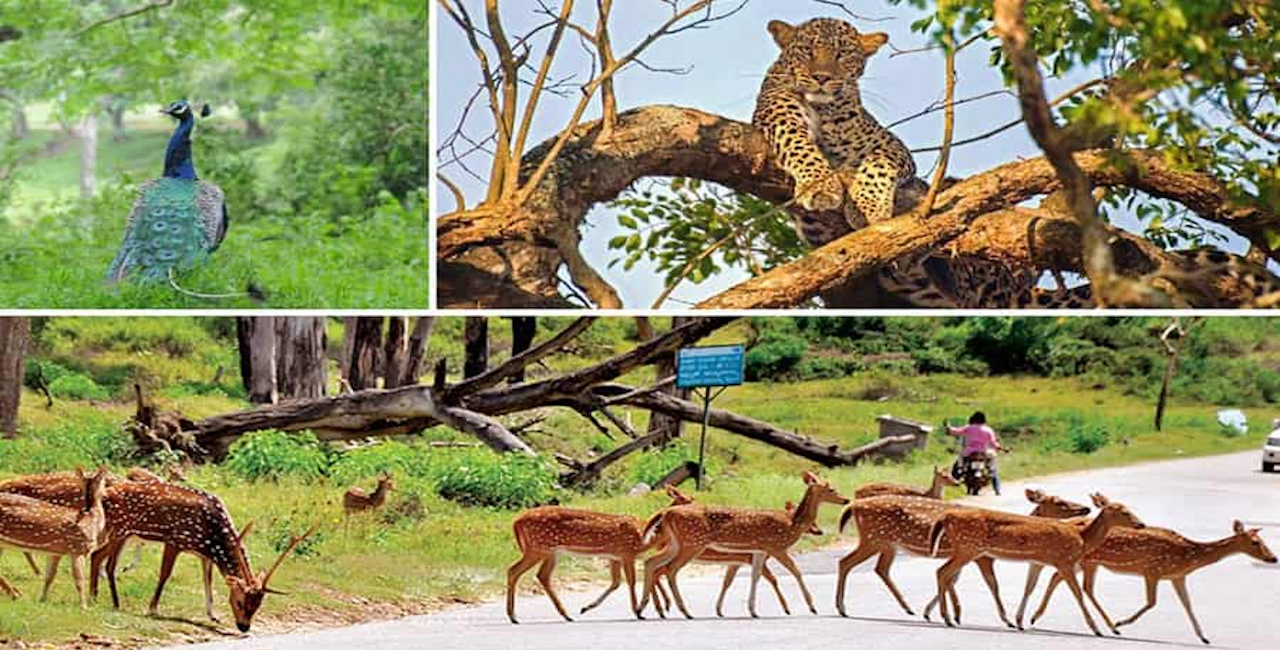Situated at the foothills of the Western Ghats in Karnataka, Bandipur National Park is a testament to India’s rich biodiversity and natural beauty. Spanning an impressive area of 874 square kilometers, it forms a crucial part of the Nilgiri Biosphere Reserve, which is one of the most significant ecological zones in the country. Established in 1974 as a tiger reserve under Project Tiger, Bandipur is not just a sanctuary for wildlife but also a haven for nature enthusiasts and conservationists.
Historical Significance
Once a private hunting ground for the Maharajas of Mysore, Bandipur’s history is deeply intertwined with the region’s royal heritage. Recognizing the ecological value of the area, it was converted into a protected reserve, ensuring the preservation of its diverse flora and fauna. Today, Bandipur National Park is celebrated as one of India’s finest wildlife reserves, attracting thousands of visitors annually.
Flora: A Verdant Wonderland
Bandipur’s landscape is characterized by a mix of deciduous forests, scrublands, and grasslands. The park is home to a variety of tree species, including teak, sandalwood, rosewood, and Indian laurel. During the monsoon, the forest comes alive with vibrant hues, as wildflowers carpet the ground and the trees regain their lush greenery.
The vegetation supports a complex ecosystem, providing habitat and sustenance for numerous animal and bird species. The coexistence of different types of vegetation also makes Bandipur an excellent spot for studying plant diversity and ecological interactions.
Fauna: The Wildlife Spectacle
Bandipur National Park is renowned for its incredible wildlife. As a part of the Nilgiri Biosphere Reserve, it plays a vital role in the conservation of endangered species. The park is most famous for its tiger population, and spotting this majestic predator is a highlight for many visitors.
Other large mammals include Asian elephants, Indian bison (gaur), leopards, sloth bears, and dhole (Indian wild dogs). The park is also home to various species of deer, such as chital and sambar, as well as wild boars and langurs. The rich diversity of smaller animals, including porcupines, mongooses, and civets, adds to Bandipur’s ecological richness.
Birdwatchers will find Bandipur equally fascinating, with over 200 species of birds inhabiting the park. Iconic avian residents include peafowl, crested serpent eagles, and Malabar pied hornbills. The park’s rivers and water bodies attract aquatic birds like herons and kingfishers, making it a paradise for bird enthusiasts.
Activities in the Park
Bandipur offers a range of activities for visitors to experience its natural beauty. Safari rides are the most popular, allowing tourists to explore the park’s interior while maintaining a safe distance from the wildlife. Early morning and late evening safaris provide the best opportunities to spot animals in their natural habitats.
For those interested in photography, Bandipur is a treasure trove of opportunities. The park’s diverse landscapes, combined with its wildlife, make it an ideal location for capturing stunning shots of nature.
Treks and nature walks, conducted by trained guides, allow visitors to delve deeper into the forest and learn about the intricate relationships within its ecosystem. These activities are perfect for individuals keen on understanding the delicate balance of the natural world.
Conservation Efforts
Conservation is at the heart of Bandipur National Park’s mission. The park’s inclusion under Project Tiger has significantly contributed to the protection of tigers and their habitat. Anti-poaching measures, community engagement, and habitat restoration are among the various initiatives undertaken to safeguard the park’s biodiversity.
Moreover, the Forest Department collaborates with local communities to promote sustainable practices and reduce human-wildlife conflicts. These efforts not only benefit the wildlife but also enhance the livelihoods of the people living around the park.
Challenges and Future Prospects
Despite its success, Bandipur faces challenges such as habitat degradation, human encroachment, and the increasing impact of climate change. The growing pressure from tourism also necessitates the implementation of stricter guidelines to ensure minimal disturbance to the wildlife.
Looking ahead, the focus must remain on sustainable development, enhanced conservation efforts, and raising awareness about the importance of protecting such critical ecosystems. With collective action and continued vigilance, Bandipur can continue to thrive as a sanctuary for wildlife and a source of inspiration for future generations.
Conclusion
Bandipur National Park is more than just a wildlife reserve; it is a symbol of India’s commitment to preserving its natural heritage. Its stunning landscapes, rich biodiversity, and conservation success stories make it a must-visit destination for anyone who values nature. Whether you’re an adventure seeker, a wildlife enthusiast, or someone looking to connect with the serenity of the natural world, Bandipur promises an unforgettable experience.


0 Comment